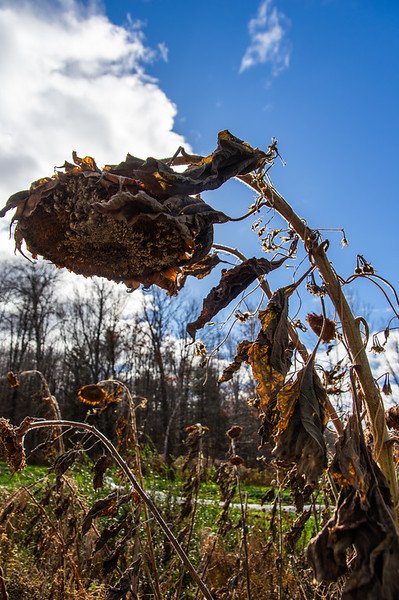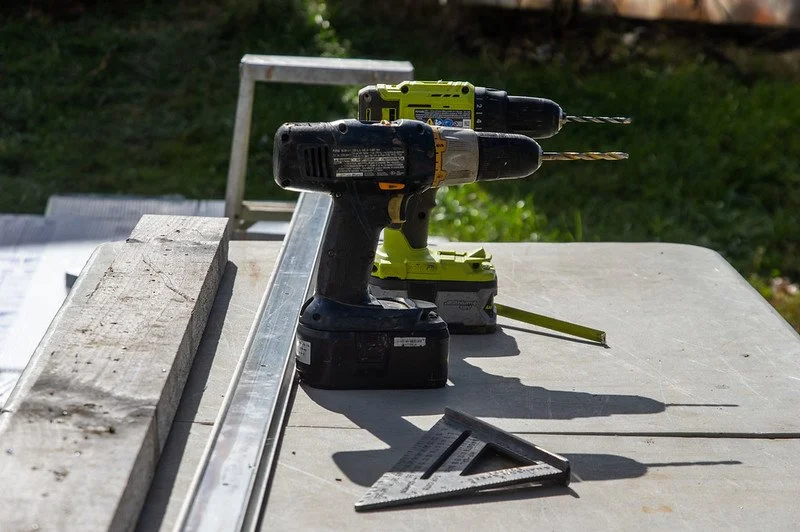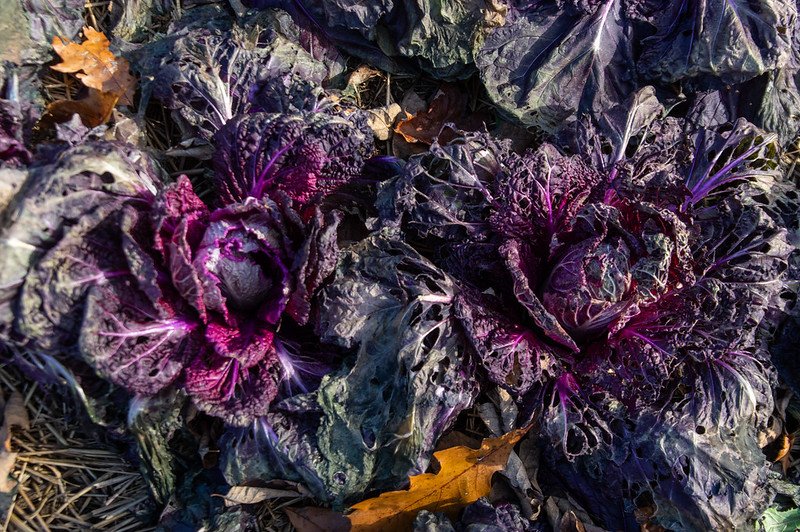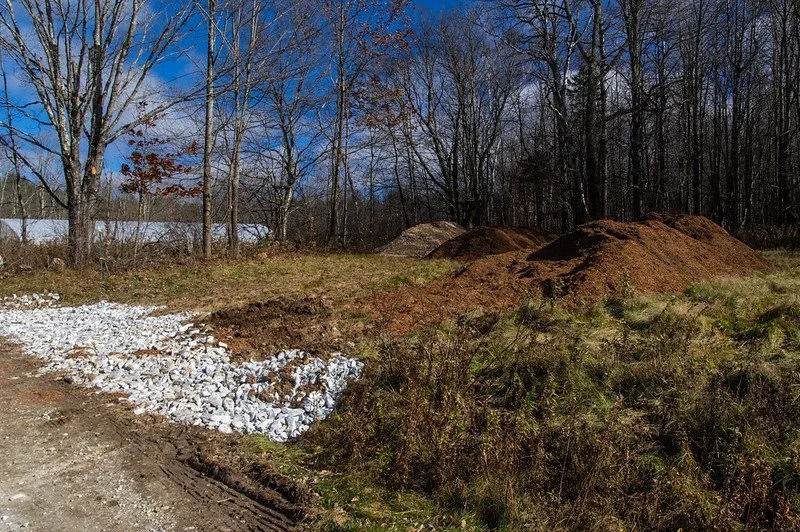4th Week of the Fall CSA season: Week of November 15th
one of the brussels sprouts fields with an excellent cover crop understory, photo by Adam Ford
CSA Balance Due
If you haven’t already paid, your balance is due this week. You can pay online through your account (with a card or e-check ACH payment), mail a check to Evening Song Farm 48 Nice Road, Cuttingsville VT 05738, leave a check or cash in the CSA cash box at the barn, send money with Venmo @eveningsongcsa, or use EBT. It’s very cool to pay in smaller chunks, just let us know what your payment plan is. Unless you email us with your payment plan, or set up a payment plan on the Farmigo dashboard, please pay for the entire season now. It saves us valuable farm work time to have payments at the beginning of the season or on a planned payment schedule. Thank you!
If you are able to pay with a check, e-check, cash, Venmo, or EBT, it saves us a considerable amount of money compared to card transactions. We know that it’s necessary for some folks to use a card, so don’t feel bad if you have to use that option. Thanks!
mesclun mix growing slow and steady in the tunnel for later fall and winter harvesting, photo by Adam Ford
compared to a patch of outdoor mesclun mix that we are done harvesting from, photo by Adam Ford
This Week’s Availability
This week we will have yellow beets, red beets, yellow potatoes, red potatoes, baby lettuce, baby bok choi, green curly kale bunches, lacinato kale bunches, garlic, poblano peppers, jalapeño peppers, green serrano peppers, shallots, leeks, carrots, baby carrots, Painted Mountain grain corn, brussels sprouts, watermelon radish, daikon radish, spinach, mini red lettuce heads, mini green lettuce heads, Romaine heads, green cabbage, rutabaga, and Gilfeather turnip.
Ordering closes at noon on Tuesdays for Wednesday bags, and at midnight on Wednesdays for Friday bags.
You do not need to fill out the form if you plan to come to the barn on Wednesdays or Thursdays to pick out your items yourself.
lacinato kale still looking gorgeous outside, photo by Adam Ford
we harvest brussels sprouts from the top down, photo by Adam Ford
Farm News
The team harvested, washed, and stored all the rutabaga, Gilfeather turnip, and cabbage that was still in the field last week. Ryan got the experimental overwintered onions tucked with with straw mulch and ash bark mulch. And this week we will start doing the bulk storage harvest of the rest of the leeks and brussels sprouts that are in the field.
It was time to button up the wash station this week, to keep that work space a little warmer for us and the veggies. So the sides went up, and the wood stove moved in. We all really appreciate how most of the season, the wash station is almost an outdoor space, without walls. On harvest days we can spend a lot of time in there…. I have visited farms whose wash stations are completely enclosed, often in windowless spaces, which make for much more cozy wash stations in the fall and winter, but much less bright and sunshiny during the rest of the season. That’s why we have opted for the extra task or putting up and taking down our greenhouse plastic walls on the structure each fall and spring. Sometimes having a little extra work two times a year, to make a daily time consuming task happen in an ideal space is worth it.
Ryan attended a weekend workshop a month ago to learn about managing a farm our size as a fully no-till operation. We have explored different management methods for low- and no-till growing, especially the super fun, effective ways that Ryan has been growing different cover crops as living mulches or as mulches in place for various crops. But we still grow some crops with the use of more soil disturbance than we want, especially for growing baby greens. Before this particular workshop, we have really only been exposed to no-till growing practices on a very small scale, so it was incredibly inspiring to see an operation that is almost our size making it work. We started acquiring some materials (such as wood chips and bark mulch) that would be needed to start transitioning some zones to entirely no-till. It will be cool to choose zones that we will start shifting to those management practices this winter and fall.
Next week I will be presenting at the annual Farm to Plate conference, as part of a panel discussing climate messaging for farms. It’s always great to get to be in a room with other people in the farm and food world to discuss really anything honestly. Sometimes I can get overwhelmed at the amount of “invisible work” (as I call it) that I do as part of my farm work, that keeps me from doing as much in-the-dirt farm work on my own farm. But when I get to see the ways that some of my indoor work participates in the bigger parts of our regional food system, it feels a bit more worth it. It also helps me stay grounded as a farmer to make sure I am involving myself in bigger projects…. after all, I started farming as a way to engage with climate work, not just have delicious veggies to work with in my kitchen.
Have a great week,
-ESF Team: Ryan, Kara, Cindy, Galen, Katie, K2, Taylor, Vanessa, and Tabita (and Sky and Soraya)
barrel stove on the left keeps us warm in the wash station during the cold months, photo by Adam Ford
Ryan loading green cabbage into tote bins for winter storage, photo by Adam Ford
gravel pile to patch up some drive paths, photo by Adam Ford
Taylor harvesting storage cabbage, photo by Adam Ford
Taylor, Vane, and Ryan getting the cabbage in, photo by Adam Ford
we love how all the sunflowers in the flower garden become bird feeders, photo by Adam Ford
filter that lives at the beginning of the irrigation line to keep the lines clean, photo by Adam Ford
Vane cutting the cabbage at the base, photo by Adam Ford
drills out for the endwall project, photo by Adam Ford
every farm needs a Cindy to keep the infrastructure in good share, photo by Adam Ford
spinach looks go beautiful and dark green in the tunnels, photo by Adam Ford
green curly in the tunnel is still getting big enough to harvest for bunches, photo by Adam Ford
tiny frozen eggplant that didn’t get big enough to harvest before the frost, photo by Adam Ford
bummer this year that cutworms invaded the napa plantings and destroyed most of the heads. Next year we will make sure to cover the growing napa with insect netting. photo by Adam Ford
These are piles of wood chips and shredded ash bark that we will use for mulching some of the no-till fields we will be transitioning next year. We have been shifting towards no- and low-till methods for years now, and these piles will help us convert more spaces into fully no-till zones. It also feels great to be able to make good use of a clean local byproduct from our state’s forestry industry. photo by Adam Ford




















